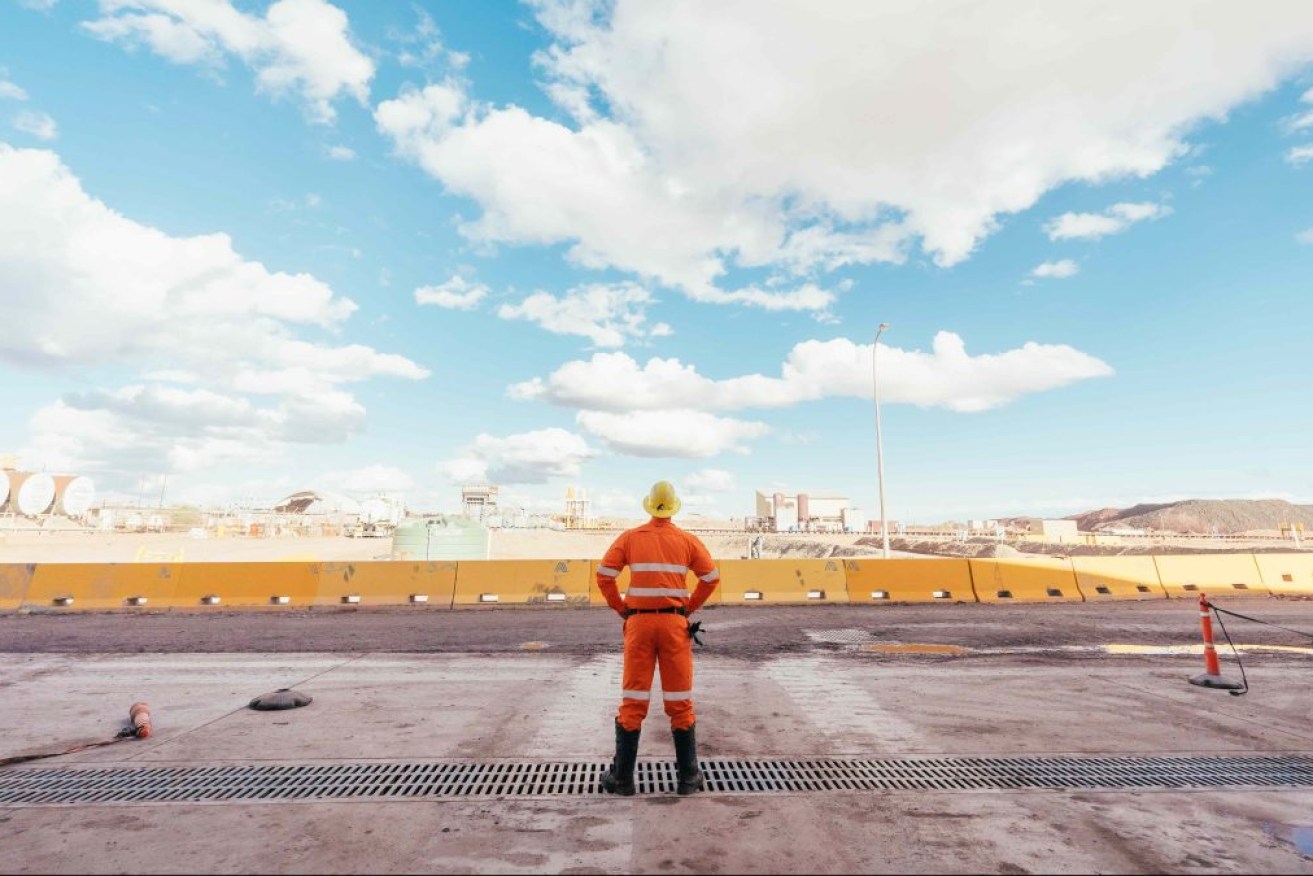SA minerals exploration surge as renewables demand grows
South Australia is experiencing its highest surge in mineral exploration for almost a decade as the hunt for high-paying copper and graphite lures miners to the state.


Olympic Dam in South Australia's north. Photo: BHP
While mining giant BHP leads the way with copper exploration at Oak Dam in the state’s north, the search is also on for rare earth elements, iron ore, mineral sands or zircon and gold.
Figures released this month show private mineral exploration in South Australia reached $38.4 million dollars in the September quarter.
That’s a 9.7 per cent or $3.4 million rise from the previous quarter, and the highest since June 2013.
The state’s famed copper deposits are helping attract miners wanting to feed the world’s growing appetite for the precious commodity that will propel a decarbonised future, according to Energy and Mining Minister Tom Koutsantonis.
Wind turbines, electric vehicles, power cables, energy efficient generators, motors, transformers, and renewable energy production systems all rely on copper to operate.
Koutsantonis said that in 2021 alone, South Australia produced enough copper to build 3.4 million new electric vehicles or wire 1.5 million homes.
A total of $136.8 million was spent on mineral exploration in the 12 months up to September 2022, beating the previous 12 months’ private mineral exploration spend by $40 million.
South Australia has long been recognised for its copper deposits.
Australia is home to 13 per cent of the world’s copper resources, second only to Chile. South Australia has the majority share with an estimated 69 per cent of the nation’s copper resource, much not yet developed.
A BHP spokesperson said the company is continuing next stage resource definition drilling at Oak Dam with six drill rigs, after starting the program in May 2021. The Oak Dam exploration prospect is a copper target.
BHP’s employs around 4,000 South Australians directly and around the same number contractors – its state-wide workforce lifted to around 10,000 with extra work around its smelter maintenance campaign in the last financial year.
“It is crucial that we debunk the myth that suggests more renewables will mean the end of mining,” Koutsantonis said.
“Nothing could be further from the truth – low carbon economies are built on critical materials.”
ABS export figures also released this month show refined copper and copper product exports recorded a 17 per cent or $300 million growth in the past 12 months to October 2022 compared with the previous 12 months.
Koutsantonis said the potential for high levels of renewables in the SA grid and to decarbonise heavy industry is “a huge opportunity for the green minerals sector”.
“The South Australian Productivity Commission models that an export-scale hydrogen plant and green minerals sector – just for copper – would contribute 7000 jobs and deliver an increase to gross state product of $2.3 billion,” he said.
Working in the state’s favour is the United State’s Federal Strategy to Ensure Secure and Reliable Supplies of Critical Minerals along with the Inflation Reduction Act recently approved by Congress, he said.
Under that US legislation, 40 per cent of the value of critical minerals in a battery must be sourced from a country that has a free trade agreement (FTA) with the US, with that threshold rising to 80 per cent by 2027.
Australia is one of 20 countries that has an FTA with the US and one of only a handful of those countries with the capacity to export critical minerals for batteries.
“The Bank of America, in a global research report, estimates investment of US$150 billion a year is needed in global mining to produce the critical minerals needed to transition to net zero,” Koutsantonis said.
“Mineral exploration in our state is crucial to ensure South Australia secures its share of this private investment.
“Our resource inventory gives us the opportunity to add diversity to South Australia’s economy and, through growing our exports, assist other countries in their transition to low carbon economies and to meet their Paris treaty obligations.”
Graphite is another critical mineral that is crucial to the development of an electric age as a key component in battery systems, both domestic and grid-scale.
Other critical minerals for emerging industries include manganese, lithium, nickel, cobalt, rare earth permanent magnets, chromium, zinc and silicon.




